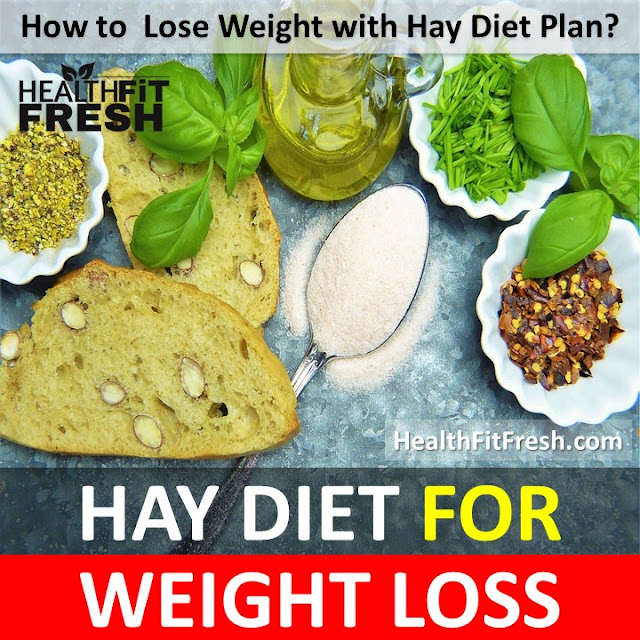Hay Diet Weight Loss
Are you looking for a great diet program to help you lose weight? The Hay Diet may just be the answer to your prayers! So what exactly is the Hay Diet?Hay Diet
It is a food-combining diet that is named after William Howard Hay, a physician from New Year who began development of the diet in 1904. This diet plan prohibits consuming proteins and starches during the same meal.
Hay developed this diet as a treatment for medical conditions that he suffered from including a dilated heart. In about 3 months, he lost 50 pounds and recovered from the health problems he had.
Basic Rules Of The Diet:
The Hay Diet, or Food Combining Diet, has 5 basic rules which are:
- Do not eat carbohydrates with acid fruits and proteins in the same meal.
- Eat fruits, vegetables and salads as the primary part of your diet.
- Eat fats, proteins and starches in small amounts.
- Eat only unprocessed and whole grain starches, excluding processed or refined foods like margarine, white sugar and white flour.
- Allow a break of at least 4 to 4 ½ hours between different types of meals.
By following these simple rules, chronic and degenerative health problems such as arthritis, indigestion and constipation can be reversed. It can also be of great helps to those who suffer from asthma and allergies. Since it has the ability to stimulate natural weight loss, it lowers the health risks that are connected to obesity. These risks include coronary heart disease, gallstones and diabetes.
Hay Diet Plan
Categories Of The Hay Diet Meal Plan:
According to the Hay Diet meal plan, the three food categories that it is based on are Proteins, Starches and Neutral. You can combine Proteins and Neutral foods as well as Neutral Foods with Starches. However, as mentioned earlier, Proteins and Starches cannot be combined.
1. Protein Category
In this category, the foods included are:
- Meat, fish, poultry, eggs as well as dairy products which include milk, yogurt and cheese. Milk should not be combined with meat but can be eaten with fruits.
- Beans which include kidney beans, pinto beans, soy beans, lima beans, haricot beans, chickpeas and lentils.
- A large number of fruits, including apples, gooseberries, cherries, kiwis, guavas, apricots, currants, cherries, berries, grapes, lychees, grapefruit, passion fruit, tangerines, nectarines, pineapples, prunes, pears, mangoes, oranges, lemons and limes. Melons fall under this group, but should be eaten separately.
- The permitted beverages are white wine, red wine and cider.
2. Starch Category:
In this category, the foods included are:
- Rice, bread, cereal and products that are made from flour as well as whole-grains like barley, wheat, oats and corn.
- Starchy vegetables such as pumpkins, sweet potatoes, potatoes and Jerusalem artichokes.
- Sweet fruits such as figs, dates, sweet grapes, raisins and ripe bananas. Extremely ripe fruit should be avoided as they have a higher content of sugar.
- Permitted beverages in this group are ale and beer.
3. Neutral Category:
In this group, the foods included are as follows:
- All vegetables except those that are included in the Starches category.
- All types of nuts with the exception of peanuts.
- Fats which include olive oil, cream, butter and egg yolks.
- Permitted beverages in this category are gin and whisky.
Important Precautions:
Although eating fruits and vegetables can help in relieving constipation, you should not depend solely on the Hay Diet to treat conditions such as arthritis, asthma, allergies and heart disease. If you are diagnosed with these conditions, you may require medication to effectively treat them. This is why you should consult your physician before you start on the Hay Diet or any other diet plan.

